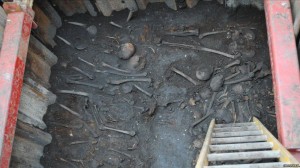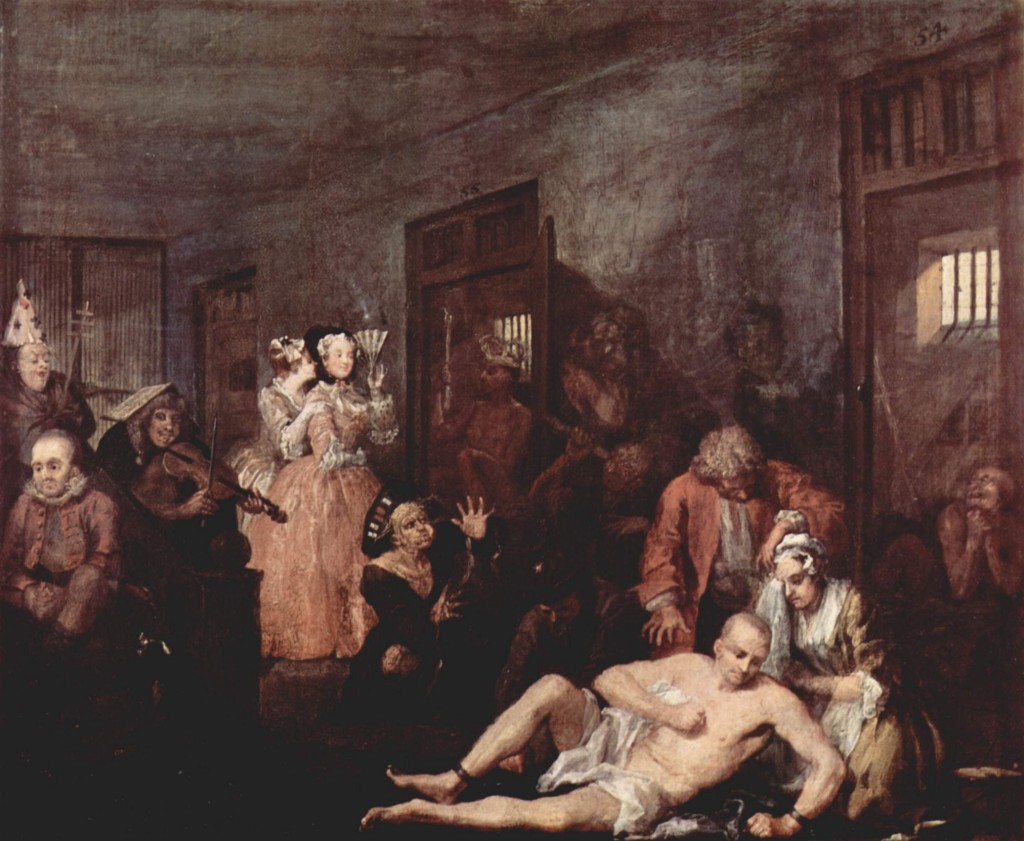 Archaeologists surveying a future site of the massive Crossrail project next to the Liverpool Street railway station have uncovered over a hundred skeletons in a burial ground that was used to inter patients from the infamous St. Bethlehem Hospital, aka Bedlam, starting in 1569.
Archaeologists surveying a future site of the massive Crossrail project next to the Liverpool Street railway station have uncovered over a hundred skeletons in a burial ground that was used to inter patients from the infamous St. Bethlehem Hospital, aka Bedlam, starting in 1569.
So far they’ve only dug a trial pit and found over a hundred skeletons starting just five feet below street level. Since the site is far larger than the small exploratory trench, lead archaeologist Jay Carver calculates that they will find hundreds more once the entire site is excavated, maybe even thousands.
This isn’t the first time the area has burst forth a glorious danse macabre courtesy of Bedlam’s hundreds of years of continuous use, first as a priory for the religious of the Order of the Star of Bethlehem in the 13th century, until the insane asylum that would become synonymous with a maddening racket moved to that location in the late 17th century. Four hundred skeletons were found next door when the office pedestrian complex Broadgate Centre was built during the 1980s.
The burial ground continued to be used until the 19th century for local residents when other intown cemeteries ran out of space, so not all of these skeletons are mental patients who died in the famously deplorable conditions of Bedlam; however, the huge numbers involved means there will be a high concentration of 16th century remains, both of the hospitalized and of the city poor.
‘It’s interesting on the archaeological side because the 16th century is a time of immense poverty really in the outer areas of the city of London. Sites of this type haven’t always been fully investigated,’ Carver said.
The team also uncovered pottery fragments, clay pipes, animal bone artefacts, including knife handles, and, as yet, unidentified implements in association with the burials.
The bodies will be studied at the Museum of London prior to reburial. Researchers will examine the gender distribution, their ages, and signs of chronic and terminal illness. The remains will then be re-interred locally, as per government regulations, but where exactly hasn’t been determined yet. Most of the bodies found in the ’80s were reburied under Broadgate Centre itself. East London Cemetery has accommodated past archaeological remains, but even they may not have the space for the numbers of skeletons expected to be found over the next two years of excavation.
St. Bethlehem Hospital was the world’s first hospital dedicated to the treatment of mental illness. I use the word “treatment” loosely, however, since mainly patients were kept in a chaotic, filthy, prison-like environment. They weren’t even called patients until 1700. Before that they were all “inmates” and there was no distinction made between curable and incurable cases.
In the 18th century, rich people would pay to visit the crazies and hoot at the spectacle behind their fans. Satirist William Hogarth depicted just such a scene in the last painting from his A Rake’s Progress series, where the titular rake’s moral degradation leads him from foppery to gambling to whoremongering to debtor’s prison to an ignominious naked finale as a shackled madman among the madmen of Bedlam, their wretchedness providing entertainment for his one-time society equals.
